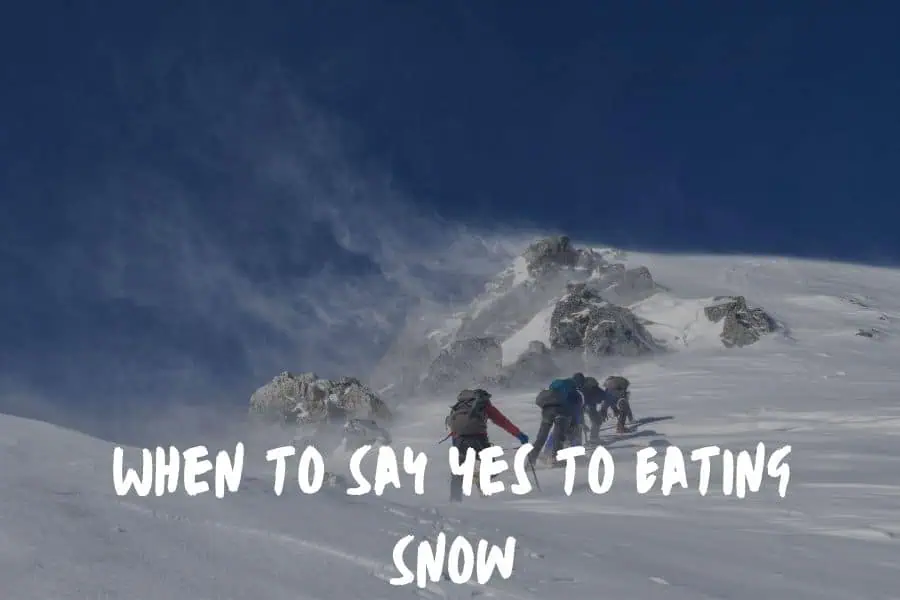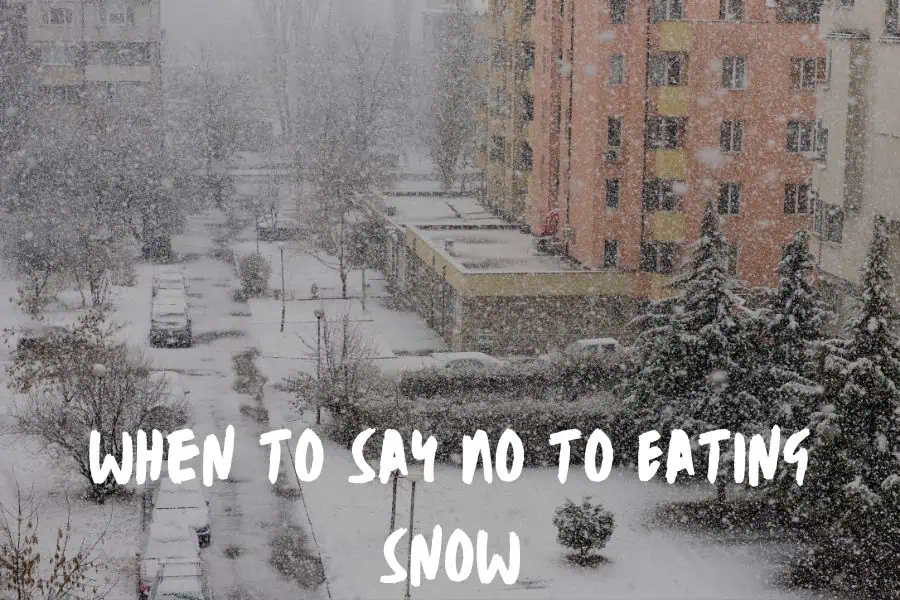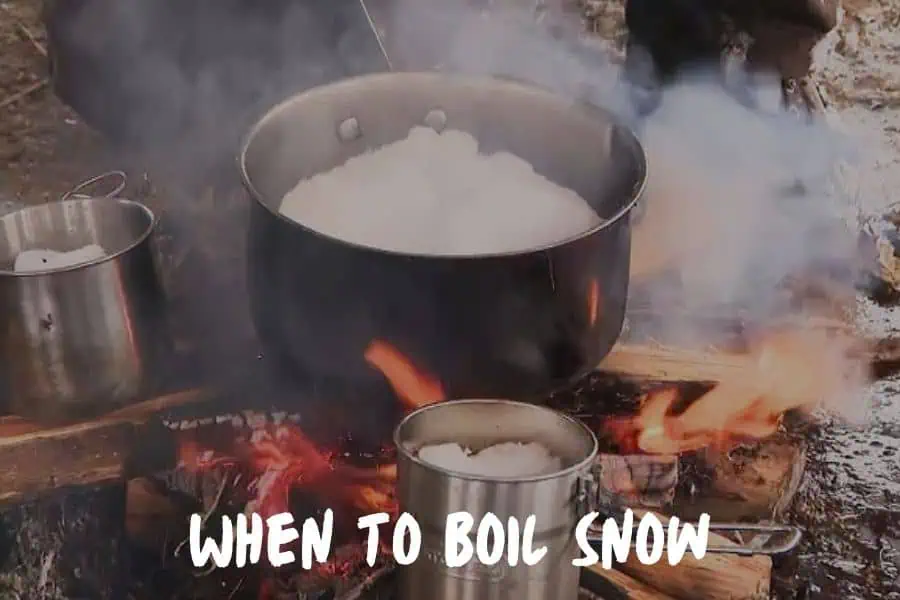Right here at Wilderness Instances, we hope you’re getting out into some superior snow-covered landscapes this winter (even when it’s simply your individual yard).
We’ve heard the query of “is it suitable for eating snow” greater than as soon as, so we’re right here to provide some solutions!
Whether or not you could have a toddler who likes to fall face first into snow banks, or an journey group that desires to check out backcountry slushies, understanding when you may eat the snow round you and extra importantly, when to keep away from it, is nice data to hold with you.
Let’s discuss it!
Brief Reply: It Relies upon
On a scientific stage, snow is water that was frozen into snowflakes earlier than it fell to the bottom.
In case you’re protected to drink rainwater, you’ll suppose the identical would apply to snow. And, nicely, it form of does.
However aside from a spare snowflake that you simply catch in your tongue within the winter, it’s unlikely that you simply’re going to catch an enormous portion of snow from the sky itself.
It just about all the time touches the bottom first. On this article, we’re going to cowl when you may eat snow based mostly on what it appears to be like like on the bottom.
TLDR: Solely eat recent, white snow with no proof of dust, rocks, or animal or plant matter in it. Guarantee that you’re amassing snow away from any fashionable footpaths or parking tons.
When to Say Sure to Consuming Snow

Image this: You’re within the backcountry with some mates and somebody desires to attempt a backcountry slushie (recent snow with maple syrup in it – it’s scrumptious, belief us!).
Maybe one other, extra sensible, good friend is making an attempt to gather snow for campsite water.
If there’s recent snow, you’re in luck. Have a look off any foremost foot or animal paths to seek out comparatively untouched snow.
As you collect it, check out the snow itself. There shouldn’t be any dust, rocks, animal or plant matter in it.
All the time take the snow off of the highest of the snowpack.
The primary snow that falls in any snowstorm is the most definitely to soak up any dust or air pollution that’s floating round within the environment earlier than the storm, just like the carbon that comes from smoke.
Which means that it’s finest to attend just a few hours right into a snowstorm to assemble snow for consuming or consuming, when there’s much less dust within the air and the snow.
That is the primary motive why we might advise you to stay to the highest of the snowpack.
Principally, you’re on the lookout for the whitest and freshest snow you’ll find. Which means that as near that “recent rainwater” state as potential, and as clear as you’ll find it.
As a overview, listed here are the primary qualities to search for when gathering snow:
- Recent: Ensure that the snow has lately fallen and hasn’t been sitting on the bottom or packed in for too lengthy.
- White & Fluffy: Snow must be as white and fluffy as potential. This implies it’s clear!
- Much less Travelled On: Find areas the place it’s much less probably that individuals or animals have handed by or stepped on the snow.
- High of the Pack: Solely collect snow from the highest of the snowpack. Keep away from something too near the bottom (it’s extra more likely to have dust in it), and wait just a few hours into any snowstorm in lively snow.
When to Say No to Consuming Snow


Sadly, there’s most likely going to be extra situations the place you’ll have to skip consuming snow.
Listed here are the highest issues to look out for to know when consuming snow is a no-go:
- Snow is just not white: Every other colour in snow that’s not white signifies that it may have dust in it. Brown, inexperienced, yellow, gray you identify it. In case you see any of those colours, skip it.
- Snow is close to animal enclosures: Keep away from snow that’s round any sort of animal enclosure or feeder.
- Snow is instantly on the bottom: It’s best to solely be gathering recent snow from the highest of the snowpack. Don’t eat the stuff that’s closest to the bottom (and likewise the most definitely to have dust in it).
- Snow has snow & ice salt in it: The chemical substances in snow & ice salt are harmful to ingest. Keep away from snow from round parking tons, strolling paths, or fashionable venues.
Any snow in fashionable footpath areas, or that has any dust, rocks, animal or plant matter in it ought to completely be averted.
It’s finest to keep away from any snow that’s round an animal enclosure or feeder.
Contaminated snow will probably look soiled like we’ve talked about above, however you may by no means be too positive. It’s higher to keep away from these areas altogether.
To be further protected, you must also keep away from snow that’s been packed in for too lengthy, or is on the underside of any snowpack.
This snow can be extra more likely to be brown and soiled (one other good motive to keep away from it).
As we talked about above, in an lively snowstorm it’s all the time finest to skip any snow that falls in the beginning of the storm.
This snow is extra more likely to maintain environmental toxins from air air pollution. So wait slightly bit earlier than going for it!
All the time keep away from snow that has the potential to have snow & ice salt in it. This sort of snow is often round strolling paths, parking tons, or fashionable venues.
The chemical substances in ice & snow salt are harmful to ingest, and the snow itself is extra more likely to be soiled from automotive exhaust.
When to Boil Snow


Throughout backcountry winter adventures, you should use snow as a foremost water supply.
Throughout these moments, it’s vital to boil the snow to make sure that it’s as clear as potential.
Boiling ensures that any pathogens are killed, making the melted snow protected to drink.
First, observe our suggestions within the sections above to assemble clear snow to your campsite.
Then, soften and boil snow for no less than 1-3 minutes to make sure protected consumption, particularly at greater altitudes the place boiling temperatures are decrease.
When you’ve boiled for these 1-3 minutes, you’ll be good to go!
Tell us the way it goes!
With all this info, we hope you’re feeling ready to remain protected if you reap the benefits of these snowy days and all they’ve to supply.
Tell us how the snow gathering goes for you, and what kind of creations you make!

